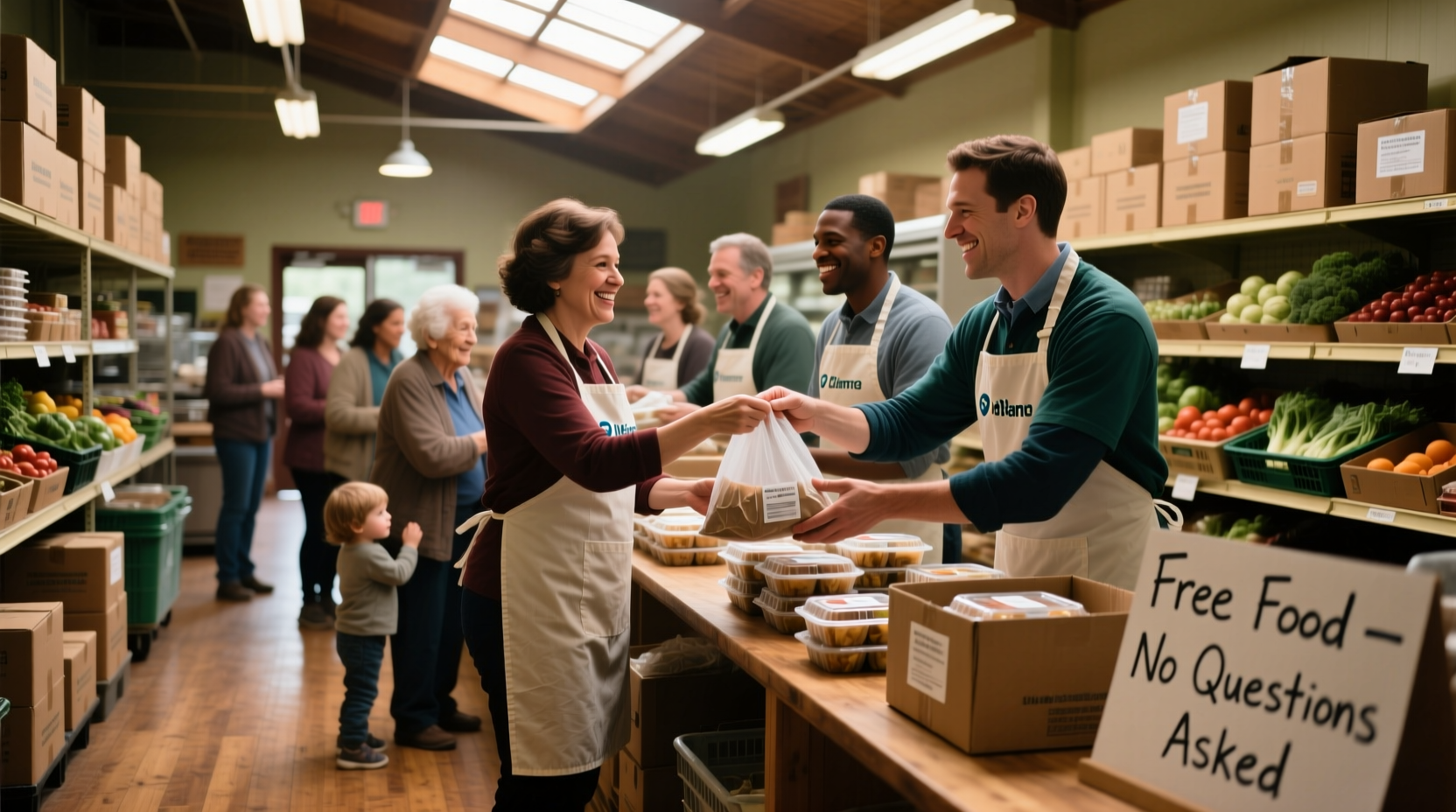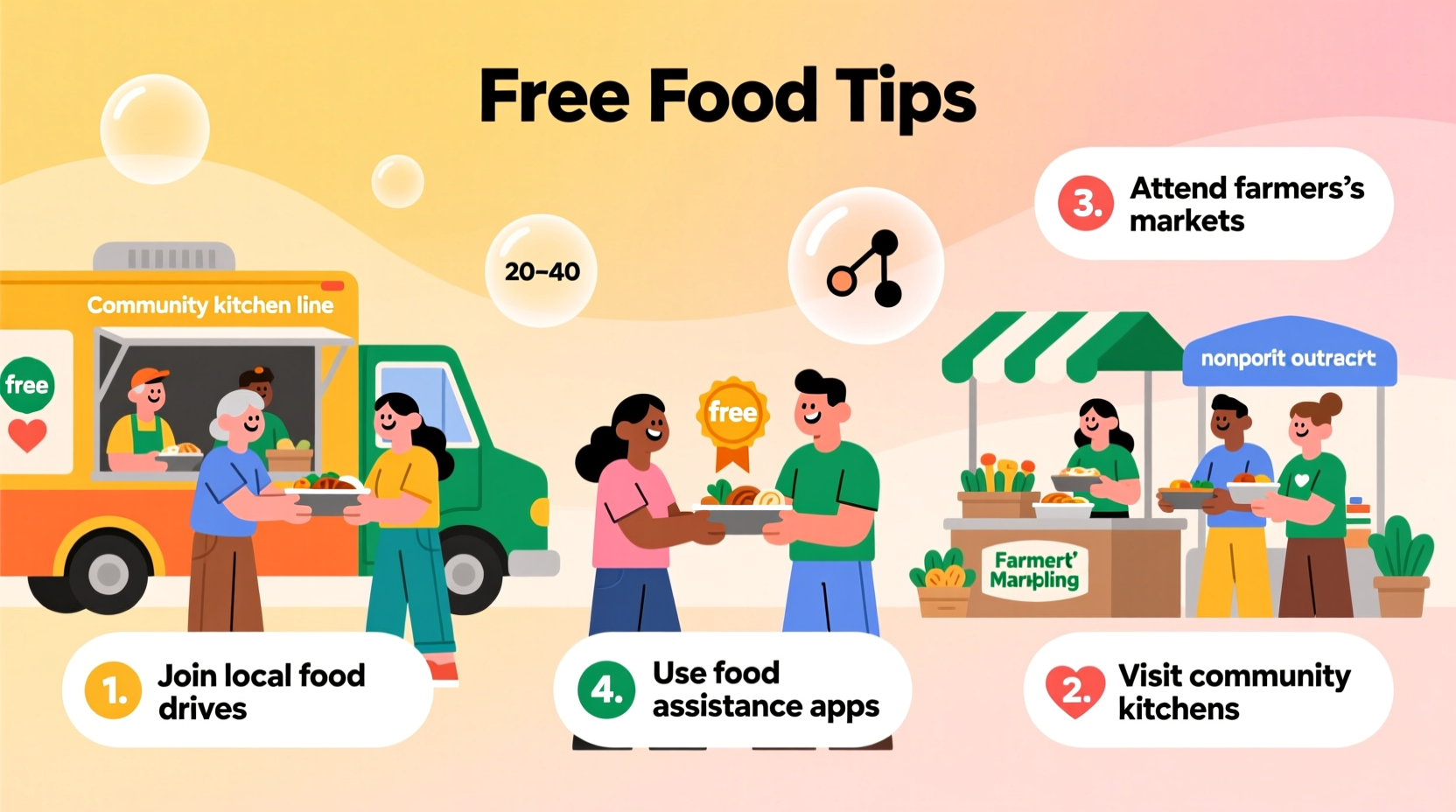When financial hardship strikes, knowing how to get free food safely and legally becomes essential. Millions of Americans access free food resources annually through established programs designed to prevent hunger. This guide outlines verified options that provide immediate relief while maintaining dignity.
Immediate Food Assistance Options
If you need food today, these resources offer same-day help. Food banks and community kitchens operate nationwide with minimal barriers to access. Unlike temporary solutions or scams, these established programs provide reliable support without requiring payment or personal information beyond basic eligibility verification.

Government Nutrition Assistance Programs
Federal programs provide the most consistent food support for qualifying individuals. These aren't handouts but taxpayer-funded safety nets designed to prevent hunger during difficult times.
| Program | Key Benefits | Eligibility Requirements | How to Apply |
|---|---|---|---|
| SNAP (Supplemental Nutrition Assistance Program) | Monthly benefits loaded onto EBT card for grocery purchases | Income at or below 130% of federal poverty level ($2,072/month for individuals) | Apply through state agency website or local office |
| WIC (Women, Infants, Children) | Nutrition education, healthy food packages, breastfeeding support | Pregnant/postpartum women, infants, children under 5 with nutritional risk | Apply at local WIC office with proof of identity and residence |
| National School Lunch Program | Free or reduced-price school meals for children | Household income at or below 185% of poverty level | Complete application through child's school |
According to the USDA Food and Nutrition Service, SNAP helped 42.2 million people afford groceries in 2023. The application process typically takes 30 days, but emergency SNAP can provide benefits within 7 days for households with very low income. You can verify program details through the official USDA FNS website at fns.usda.gov/snap.
Community Food Resources
When government programs don't cover immediate needs, community resources fill critical gaps. These services operate through established networks with transparent operations:
Food Banks and Pantries
Feeding America's network of 200 food banks serves 1 in 8 Americans facing hunger. Unlike common misconceptions, most food pantries don't require proof of income or residency. Simply locate your nearest pantry through the Feeding America locator and visit during operating hours. Many offer drive-thru service for discretion and convenience.
Soup Kitchens and Community Meals
Community kitchens provide prepared meals with no eligibility requirements. Meals typically follow health department guidelines with professional food handling standards. The National Coalition for the Homeless reports over 4,000 community meal programs operate nationwide, many serving both homeless individuals and working families facing temporary hardship.
Specialized Assistance Programs
Certain demographics qualify for targeted food assistance that many don't know exists:
Senior Nutrition Programs
The Senior Farmers' Market Nutrition Program provides $20-$50 in coupons for fresh produce at farmers markets. Administered through state agencies, this program serves low-income seniors aged 60+. Contact your local Area Agency on Aging for application details.
College Student Resources
Over 30% of college students experience food insecurity. Most campuses operate food pantries specifically for students, often located in student unions or counseling centers. These services maintain strict confidentiality and typically require only student ID for access.
Emergency Food Access
When immediate food is needed tonight, these options provide same-day help:
- 211 Helpline - Dial 211 or visit 211.org for real-time resource information
- Local churches and religious organizations - Many operate emergency food boxes with no questions asked
- Homeless shelters - Often provide meals to anyone in need, not just shelter residents
Remember that food assistance programs have evolved significantly since the Great Depression. Modern systems prioritize dignity and efficiency, with most services operating through established nonprofit networks rather than ad-hoc donations. The USDA reports that 93% of food bank clients feel treated with respect during their visits.
Maximizing Your Food Resources
Strategic planning helps stretch available resources further:
- Combine SNAP benefits with senior discounts at grocery stores (many offer 5-10% off for seniors)
- Visit food pantries early in the week when selection is best
- Ask about "choice pantry" options where you select your own items
- Preserve surplus food through freezing or canning techniques
Food insecurity affects diverse populations - from working families to seniors on fixed incomes. The key is accessing established programs rather than risking unsafe alternatives. Legitimate food assistance maintains strict privacy standards, with most services requiring minimal personal information.
Frequently Asked Questions
Can I get free food without proof of income?
Yes, most food banks and community meal programs provide food without requiring income verification. These services operate on an honor system with no documentation needed for basic access.
How often can I visit a food pantry?
Most food pantries allow visits once weekly or bi-weekly. Frequency limits vary by location based on available resources, but emergency visits are typically accommodated when needed.
Are free food programs available for undocumented immigrants?
Yes, most community food banks and meal programs serve anyone in need regardless of immigration status. Government programs like SNAP have different eligibility requirements based on immigration status.
What documents should I bring to access food assistance?
For government programs, you'll need proof of identity and residence. Community food banks typically require no documentation, though some may ask for a zip code to track service areas or a photo ID for first-time visits.











 浙公网安备
33010002000092号
浙公网安备
33010002000092号 浙B2-20120091-4
浙B2-20120091-4